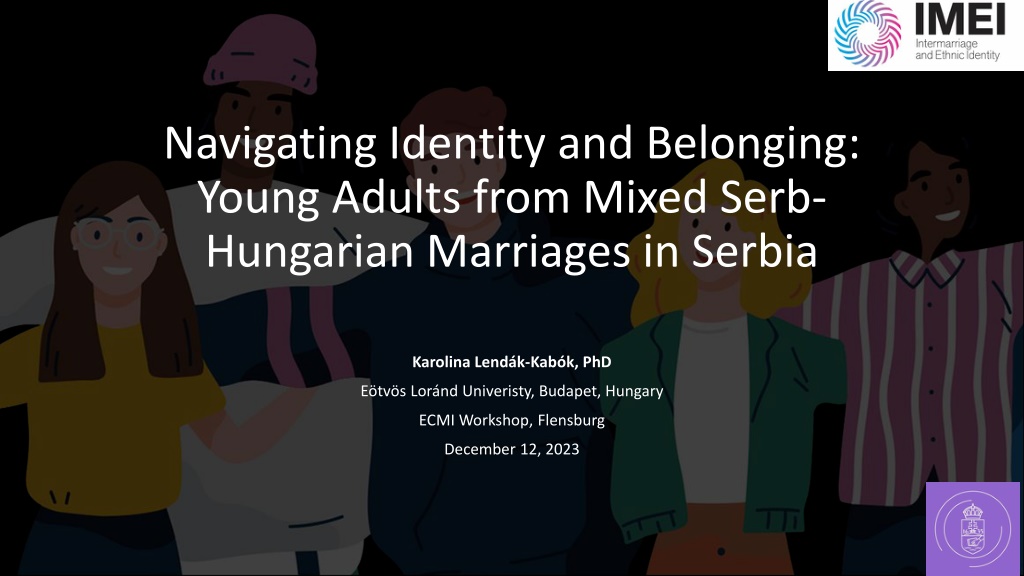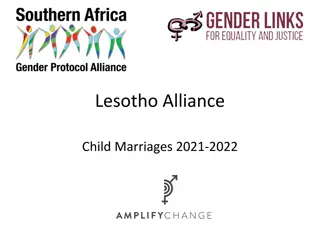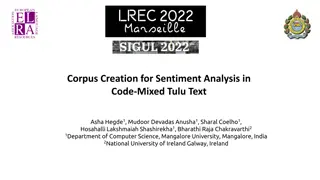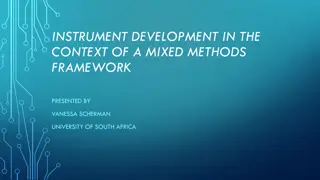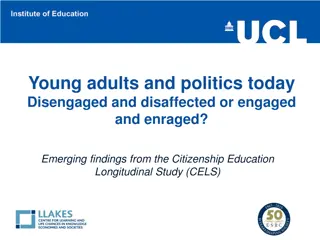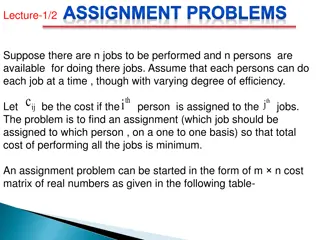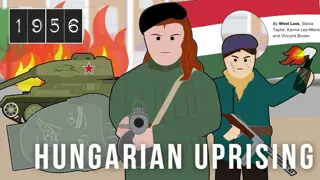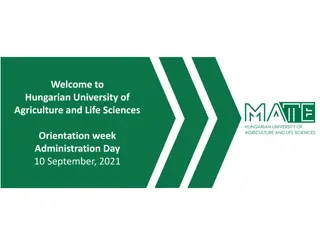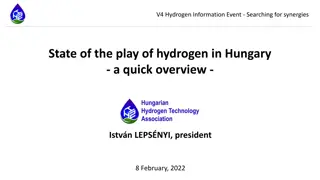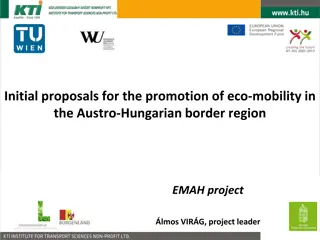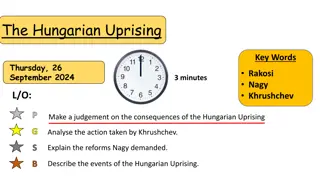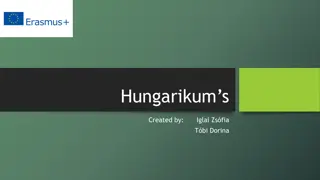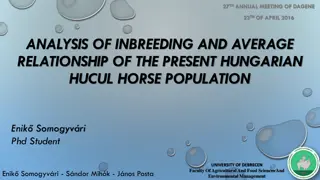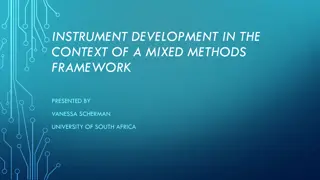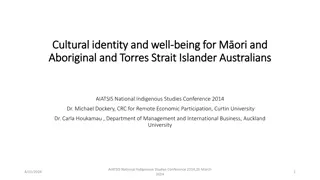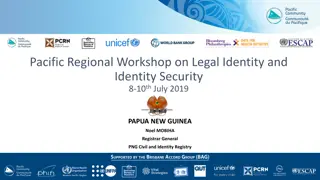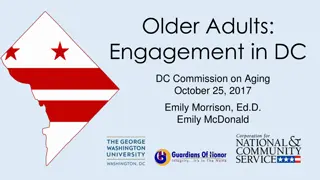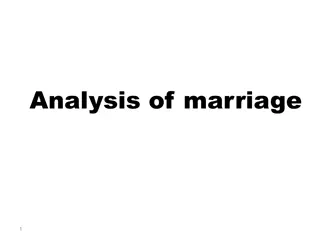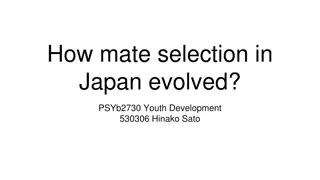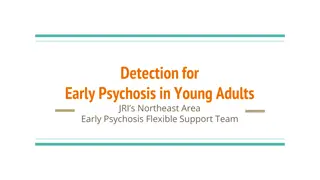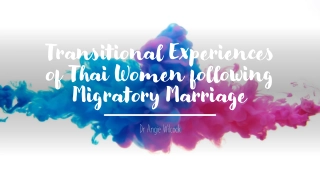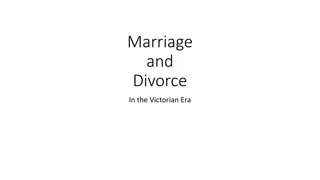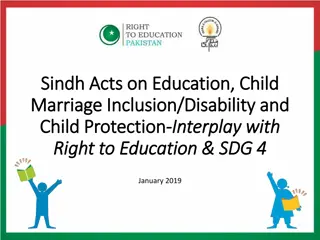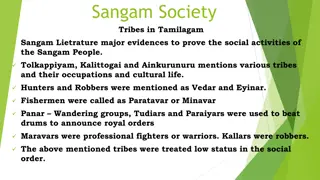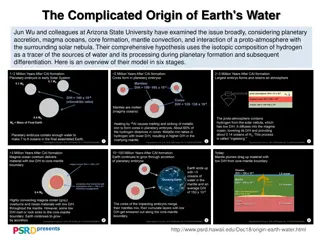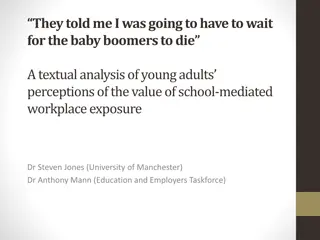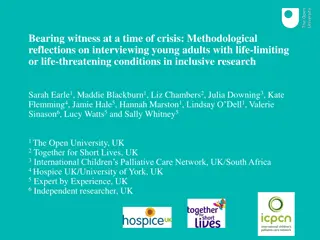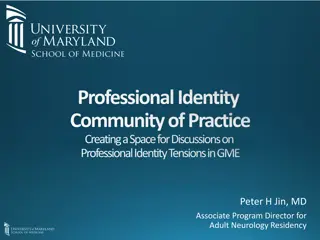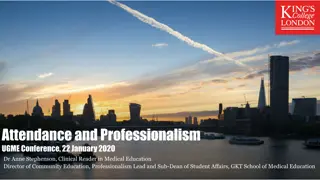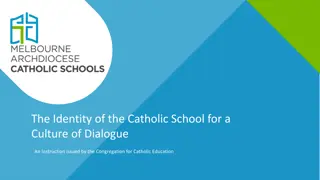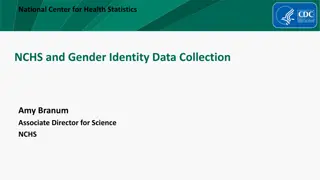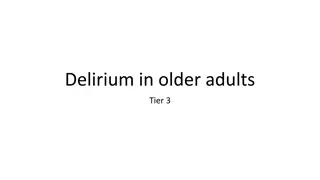Understanding Identity Formation in Young Adults from Mixed Serb-Hungarian Marriages
Young adults born into mixed Serb-Hungarian marriages in Serbia navigate a complex identity-building process influenced by their parents' distinct backgrounds, societal attitudes, and external factors. Research highlights challenges faced, such as societal acceptance and internal conflicts, but also the opportunity to develop a multifaceted sense of self. Methodologies include qualitative data collection through interviews and focus group discussions to explore topics like language, religion, and friendships. Preliminary results indicate issues with making friends and language barriers faced by these individuals.
Download Presentation

Please find below an Image/Link to download the presentation.
The content on the website is provided AS IS for your information and personal use only. It may not be sold, licensed, or shared on other websites without obtaining consent from the author. Download presentation by click this link. If you encounter any issues during the download, it is possible that the publisher has removed the file from their server.
E N D
Presentation Transcript
Navigating Identity and Belonging: Young Adults from Mixed Serb- Hungarian Marriages in Serbia Karolina Lend k-Kab k, PhD E tv s Lor nd Univeristy, Budapet, Hungary ECMI Workshop, Flensburg December 12, 2023
Young peoples identity building In the realm of social sciences, the identity formation of intermarriage-born young people has emerged as a significant area of study. Researchers like Smith and Jones (2020) have noted that these individuals often experience a unique identity-building process, navigating between the intersecting cultural narratives of their parents' distinct backgrounds. Lee and Kim (2021) emphasize that this experience can lead to a more fluid and multifaceted sense of self, although it may also pose challenges in terms of societal acceptance and internal conflicts. Moreover, Garcia (2019) highlights the role of external factors such as community and societal attitudes, which can significantly influence these young people's identity formation. These studies collectively suggest that while intermarriage-born individuals may face unique challenges, they also have the opportunity to develop a rich, complex understanding of identity that transcends traditional boundaries.
Methodology (1) Part of my MSCA project Intermarriage and Ethnic Identity (IMEI) Vojvodina (northern province of Serbia) Intermarriages between Serbs (majority) and three minority groups (Hungarians, Slovaks and Romanians) These three minority gropus have the right for minority language education Qantitative and Qualitative data collected Qualitative: Semi-structured interviews with couples who live in intermarriages ( Focus group discussions with young adults (only Hungarian Serb intermarriage-born)
Methodology (2) Focus gropus discussions were conducted in: Novi Sad (majority Serb - city) 6 participants (three grils, three boys) Senta (majority Hungarian smaller town) 5 participants (three girls, two boys) Questions: Choice of name (Hungarian or Serbian) Language of the schooling Religion Friends Serb-Hungarian relations in Serbia History Anthem Affections to Hungary Sports Books Coded and analisyed in MAXQDA
Some preliminary results (Focus group -) Novi Sad focus group - 4/6 parents were divorced Friendships: They can't make friends with Serbs because they don't understand the minority world, and Serbs never initiate friendship with them. However, once they do make friends, they can count on their Serbian friends much more than the Hungarians (who shy away from problems). Language: What they also said is that they are bothered when they are "explained" on the street or lectured to speak Serbian. Religion: They have a great respect for the orthodox religion, celebrating all religious holidays with their extended family. But on those occasions they have to be careful to speak Serbian with their brothers and sisters, because that is the expectation. Serb parents are very insistent that they attend religious celebrations - but sometimes it is difficult for them because they feel obliged to do so.
Some preliminary results (Focus group) Anthem: None of the six know the Hungarian national anthem, but they know and love Serbian. They say it is the influence of the school, because they start every school celebration with the Serbian anthem and recently they have started the school year with the anthem. Kin-state: They don t feel any connection to the Hungarian nation when they visit Hungary. Some of them know Hungarian history, others don't - but they feel nothing when they visit Hungary and encounter historical symbols. They are alienated from their Hungarian counterparts, they cannot identify with them, they do not think they understand their world or why they speak with an accent. It is their lack of acceptance that causes this aversion.
Conclusions how does it fit in the EV? Identity buidling is an important question not talked about enough within national minorities majorities relation Mixed identity as a more prominent cathegory in the future? After the brake-up of Yugoslavia being mixed as a burden it is time to talk about it again Kin-state nation state minority community: triadic nexus
References Smith, A., & Jones, B. (2020). Navigating Dual Identities: Intermarriage and Identity Formation. Journal of Cultural Studies, 45(2), 123-139. Lee, C., & Kim, D. (2021). Multifaceted Identities: A Study on Children from Intermarriage Families. International Journal of Social Science Research, 34(1), 210-225. Garcia, R. (2019). Community Influence on Intermarriage Born Youths' Identity. Sociology Today, 58(4), 400-416.
Thank you for your attention! Questions?
